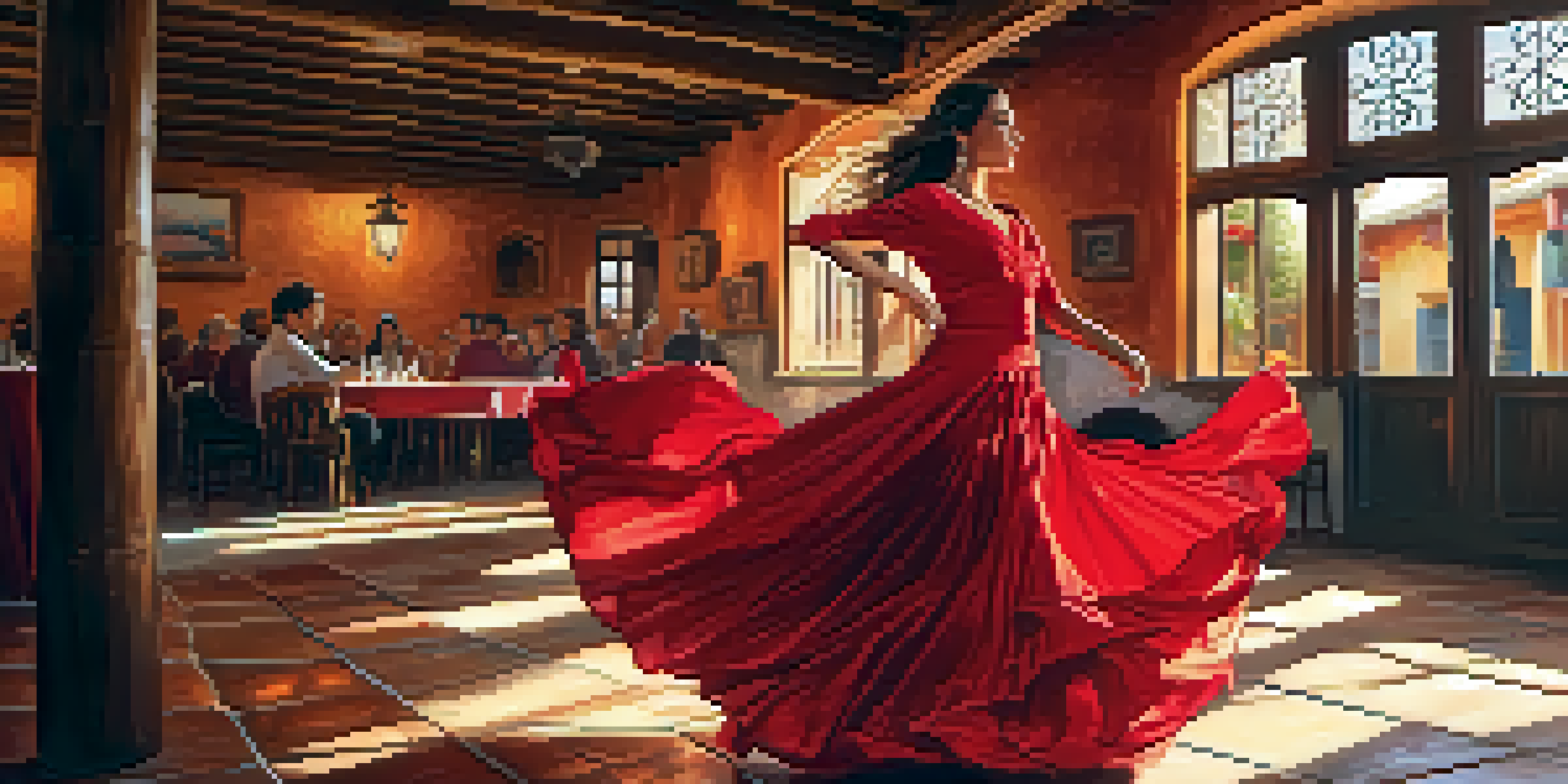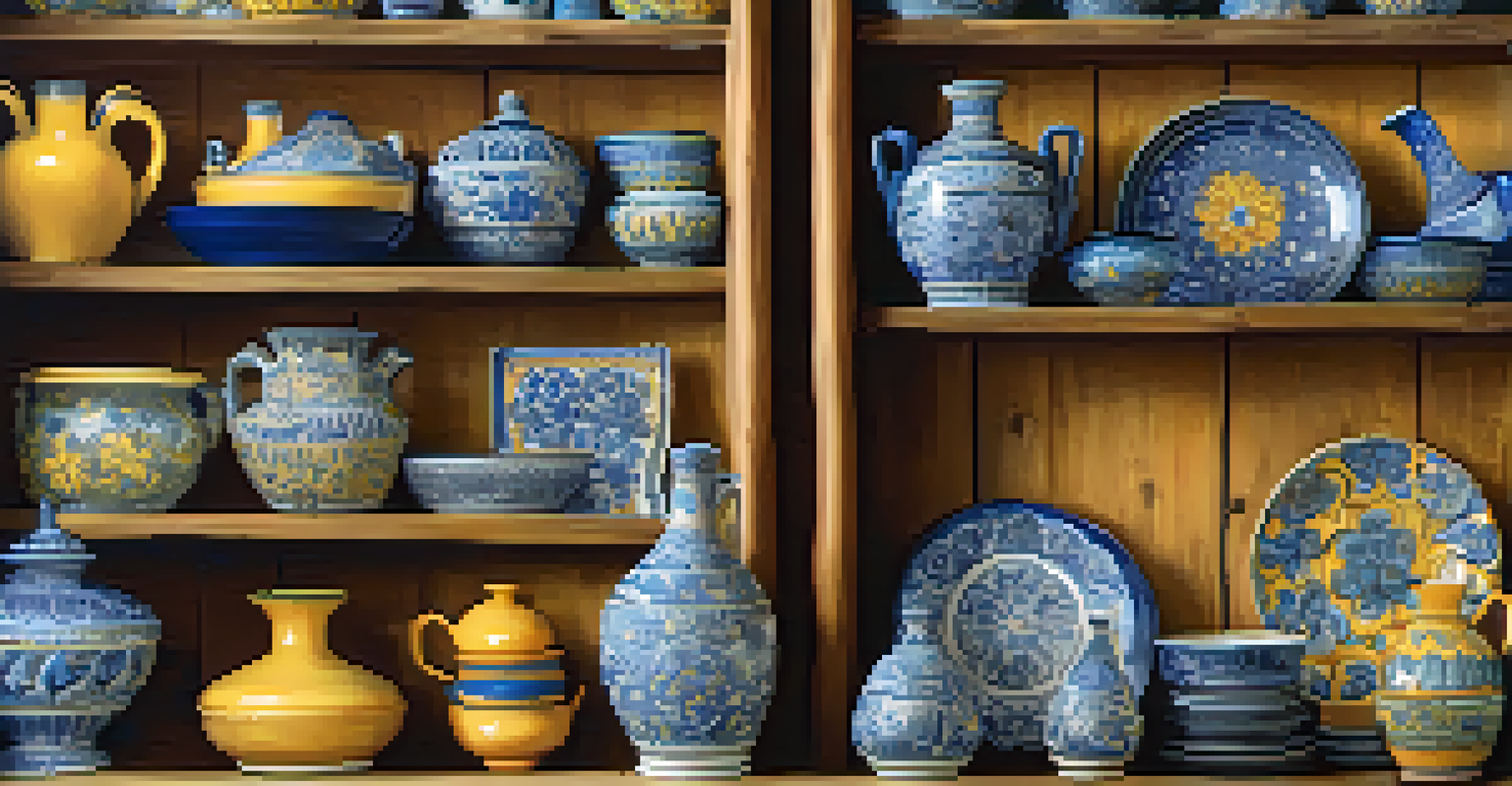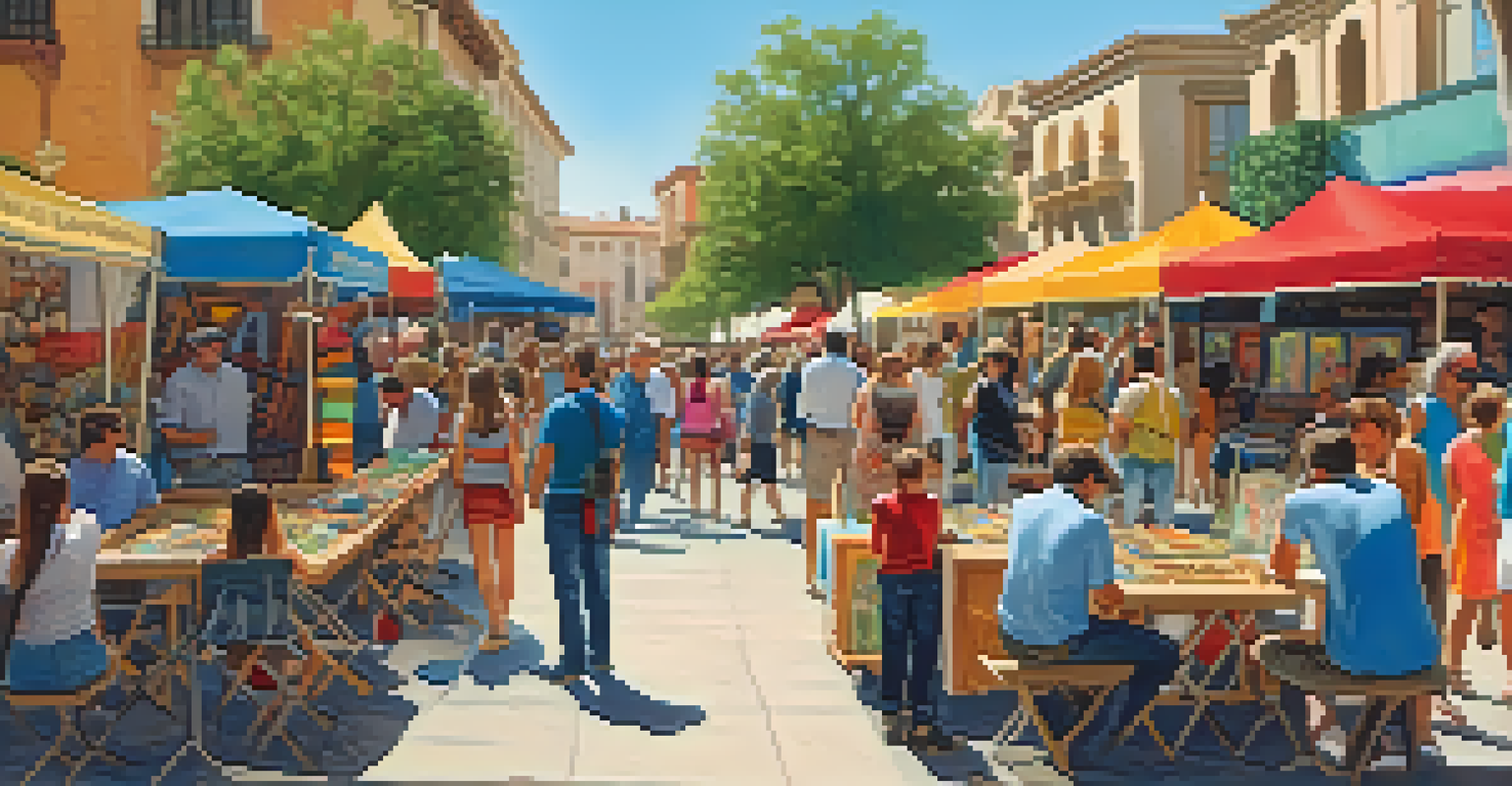The Role of Art in Preserving Spain's Cultural Heritage

Art as a Reflection of Spain's Diverse History
Art has always served as a mirror reflecting the rich tapestry of Spain's history. From cave paintings in Altamira to the vibrant works of Picasso, each piece tells a story of the people and events that shaped the nation. This historical narrative is crucial for understanding Spain's cultural evolution and the influences that have come together over the centuries.
Art is the most beautiful of all lies.
By examining artworks, we can trace the impact of various cultures, including the Romans, Moors, and Christians, each of whom left their mark on Spanish art. For instance, the intricate tile work in Andalusian architecture showcases Moorish influences, while the bold colors in Spanish Baroque paintings reflect the passionate spirit of the country. These artistic elements create a vivid picture of Spain’s past.
Related Resource
Moreover, art serves as an educational tool, inviting both locals and tourists to engage with Spain's history. Galleries and museums become places of learning, where visitors can deepen their understanding of the cultural context behind each masterpiece. In this way, art not only preserves history but also encourages appreciation and dialogue.
Preserving Traditions Through Artistic Expression
Artistic traditions in Spain are often tied to local customs and practices, making them vital for cultural preservation. From flamenco dancing to traditional crafts like pottery and textile weaving, these art forms embody the essence of regional identities. They help pass down stories, values, and techniques from one generation to the next.

For example, the intricate designs of Talavera ceramics are not just beautiful; they tell the story of the region's history and craftsmanship. Each piece reflects centuries of tradition, connecting artisans with their heritage. By actively participating in these art forms, communities reinforce their cultural ties and ensure that these traditions endure.
Art Reflects Spain's Rich History
Art serves as a mirror of Spain's diverse history, showcasing the cultural influences from various civilizations.
Additionally, festivals celebrating these art forms, such as La Tomatina or Las Fallas, play a crucial role in maintaining cultural heritage. These events attract visitors from around the world, showcasing Spain's vibrant traditions while fostering a sense of community among locals. The celebration of these art forms keeps them alive and relevant in today's society.
Art as a Catalyst for Cultural Dialogue
Art acts as a bridge, facilitating cultural dialogue both within Spain and internationally. Through exhibitions, performances, and collaborations, artists exchange ideas and perspectives that enrich the cultural landscape. This exchange helps foster understanding and appreciation for Spain's diverse heritage.
Every artist dips his brush in his own soul, and paints his own nature into his pictures.
For instance, contemporary Spanish artists often draw inspiration from traditional techniques while infusing modern themes. This blend creates a dynamic conversation between the past and the present, allowing for the evolution of cultural expression. As these artists showcase their work globally, they invite others to explore Spain's rich artistic traditions.
Related Resource
Furthermore, art festivals and biennales serve as platforms for cultural exchange, drawing artists and audiences from various backgrounds. These gatherings celebrate diversity and encourage dialogue about shared histories and experiences. In this way, art not only preserves culture but also actively promotes intercultural understanding.
The Role of Museums in Cultural Heritage Preservation
Museums play a crucial role in preserving and showcasing Spain's cultural heritage through art. They serve as custodians of valuable artworks, artifacts, and historical documents, ensuring that future generations can appreciate Spain's rich history. By curating exhibitions that highlight cultural diversity, museums foster a sense of identity and belonging.
Institutions like the Prado Museum and the Reina Sofia are not just repositories of art; they also engage in educational initiatives that teach visitors about the cultural significance of their collections. Interactive displays and guided tours create immersive experiences, making history accessible and engaging for all. This educational aspect is vital for cultivating an appreciation of Spain’s artistic legacy.
Community Engagement Preserves Culture
Local artistic initiatives and educational programs foster community pride and ensure the transmission of cultural heritage.
Moreover, museums often collaborate with local communities to preserve and promote traditional art forms. By supporting local artists and showcasing regional works, museums help keep these traditions alive. This partnership empowers communities and reinforces the importance of cultural heritage in contemporary society.
Art's Influence on National Identity and Unity
Art can significantly shape national identity, serving as a unifying force for diverse communities within Spain. Through shared artistic expressions, people from different regions can connect over common themes, values, and histories. This sense of unity is especially important in a country known for its regional differences.
For example, the works of renowned Spanish artists like Salvador Dalí and Joan Miró resonate with a broad audience, transcending regional boundaries. Their art evokes feelings of pride and belonging, highlighting the collective heritage of Spain. This shared appreciation for art fosters a sense of national identity while celebrating diversity.
Related Resource
Furthermore, public art projects and installations across cities promote inclusivity and dialogue. By bringing art into public spaces, communities can engage with their cultural heritage in meaningful ways. These initiatives encourage collaboration and reinforce the idea that art is a vital part of Spain's identity.
Digital Art and the Future of Cultural Preservation
In today's digital age, technology plays an increasingly important role in preserving and promoting Spain's cultural heritage through art. Digital platforms allow for the archiving and sharing of artworks, making them accessible to a global audience. This shift not only enhances visibility but also invites new interpretations of traditional art forms.
For instance, virtual museums and online exhibitions enable people from all over the world to experience Spanish art without geographical barriers. These platforms often feature interactive elements that engage viewers in innovative ways, creating a richer understanding of the cultural context behind the works. This accessibility is essential for keeping cultural heritage alive in a rapidly changing world.
Digital Art Expands Cultural Reach
Technology enhances the preservation of Spain's cultural heritage by making artworks accessible to a global audience.
Moreover, digital art itself is emerging as a powerful medium for cultural expression. Artists are using technology to create works that reflect contemporary issues while paying homage to traditional techniques. This fusion of the old and the new ensures that Spain's artistic heritage continues to evolve while remaining rooted in its rich history.
Community Engagement and Art as a Heritage Tool
Community engagement in the arts is essential for preserving cultural heritage in Spain. Local artists, organizations, and residents often come together to celebrate their shared history through artistic initiatives. These collaborations foster a sense of ownership and pride in cultural traditions, ensuring they are passed down to future generations.
For example, community art projects, such as mural painting or collaborative performances, invite participation from all ages. These projects often highlight local stories and traditions, allowing residents to connect with their heritage in meaningful ways. By actively engaging with art, communities strengthen their cultural bonds and contribute to the preservation of their unique identities.

Additionally, educational programs that involve local schools and youth empower the next generation to appreciate and contribute to their cultural heritage. Workshops, art classes, and cultural festivals provide opportunities for young people to explore their artistic talents while learning about their history. This investment in future generations is vital for ensuring that Spain's cultural heritage remains vibrant.